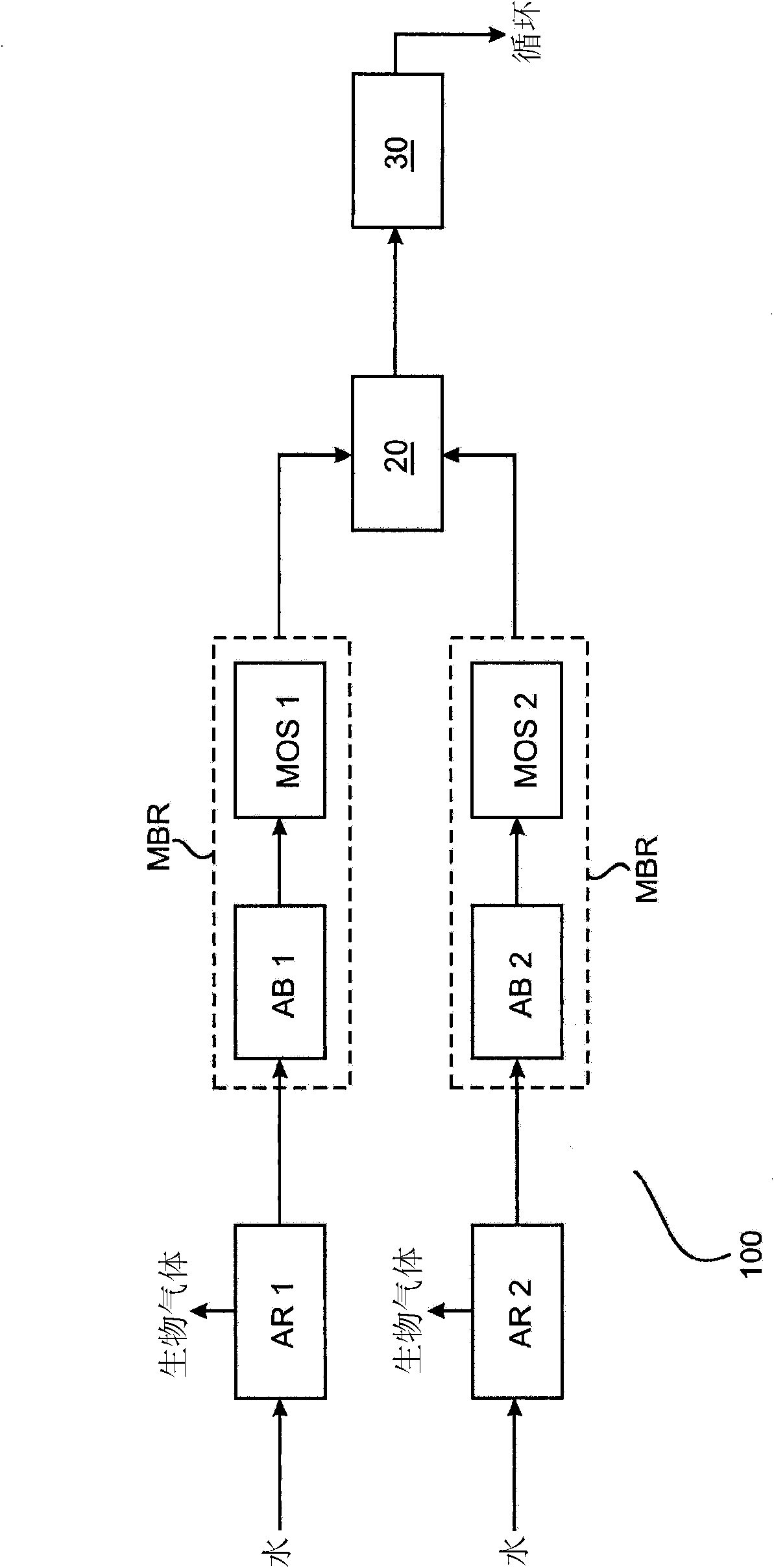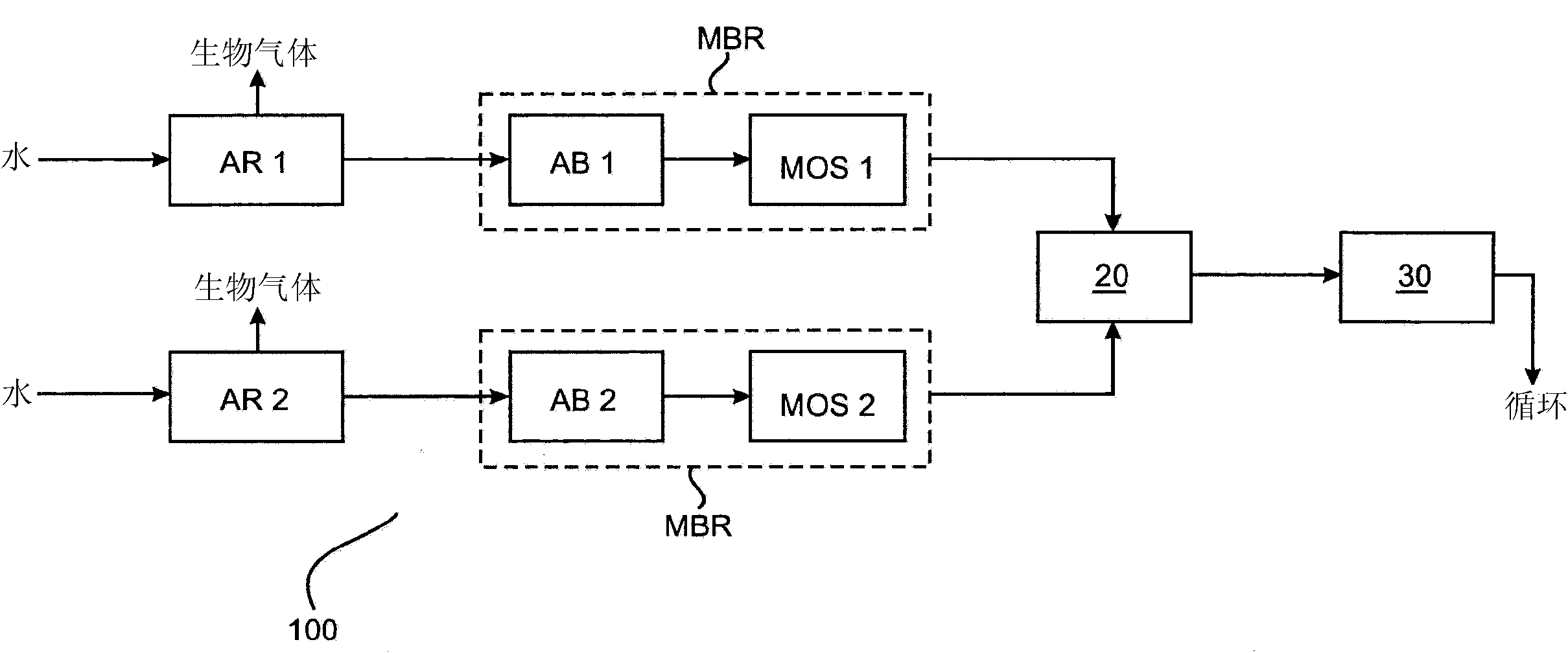Process and plant for treating a water stream
A water flow and pretreatment technology, applied in water/sewage treatment, sustainable biological treatment, chemical instruments and methods, etc., to achieve the effect of reducing the concentration and color of dissolved organic carbon
- Summary
- Abstract
- Description
- Claims
- Application Information
AI Technical Summary
Problems solved by technology
Method used
Image
Examples
Embodiment Construction
[0025] Reference now figure 1 , Shows a water treatment plant 100, which includes two anaerobic reactors (AR1 and AR2) to produce treated water and biogas (biogas). AR1 and AR2 supply the pretreated influent water to the aeration tank and membrane bioreactor ("MBR") system (AB1 / MOS1 and AB2 / MOS2). The anaerobic reactor treats untreated influent as a combination of domestic sewage and industrial wastewater received from kraft pulp and paper mills through a special wastewater pipeline through a digestion process.
[0026] Anaerobic digestion by microorganisms is assisted by adding a nutrient mixture of microorganisms, such as a sludge stream from activated sludge or primary sludge. Sufficient nutrients should be provided in order to provide sound biomass and acceptable biological digestion, thereby reducing decomposable organic carbon (commonly also referred to as biochemical oxygen demand ("BOD")) to a satisfactory level. The total chemical oxygen demand ("COD") through the react...
PUM
 Login to View More
Login to View More Abstract
Description
Claims
Application Information
 Login to View More
Login to View More - R&D
- Intellectual Property
- Life Sciences
- Materials
- Tech Scout
- Unparalleled Data Quality
- Higher Quality Content
- 60% Fewer Hallucinations
Browse by: Latest US Patents, China's latest patents, Technical Efficacy Thesaurus, Application Domain, Technology Topic, Popular Technical Reports.
© 2025 PatSnap. All rights reserved.Legal|Privacy policy|Modern Slavery Act Transparency Statement|Sitemap|About US| Contact US: help@patsnap.com



